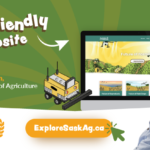-
Discuss Canada’s natural resources and their past and present uses. Students complete the scavenger hunt worksheet by finding the appropriate plants in the natural area. Wrap-up: compare past and present uses and discuss whether or not Canada’s resources are renewable.
-
Nutrients for Life produces and distributes educational materials on soil science and agricultural sustainability. Their goal is to help Canadians better understand how nutrients increase the health and quality of our soil, improve production of nutritious foods and preserve green spaces.
With the world population rapidly increasing to an estimated 9 billion people by 2050, food security is a growing issue. Nutrients for Life hopes to address this issue through its educational resources and programs, while working with educators across Canada to ensure that our resources meet the needs of teachers and students.
They support Canada’s school-curriculum needs with science-based content of the highest quality. To validate its pedagogical value, their educational materials were reviewed by the Smithsonian Institution, the world’s largest research organization and museum complex.
To learn more visit: https://www.nutrientsforlife.ca/

-
Nutrients for Life Canada has prepared e-lessons for parents or teachers to use at home. The lessons come with links to videos, activity books and games to help educate about the importance of soil, plant nutrients and understanding agricultural sustainability.
K-12

-
The goal of Nutrients for Life Foundation is to provide science-based information that helps educate people about the beneficial role of fertilizer.
Through the development of educational resources and a countrywide outreach campaign, the Foundation informs the public of the role of nutrients in both the production of nutritious, abundant food and the preservation of healthy green spaces. Plant nutrients, especially nitrogen, phosphorus and potassium, are also required to keep our parks, gardens, playgrounds, sports fields and golf courses green and healthy in communities from coast to coast.
All information developed by the Foundation is science-based and supported by agronomists, including those at the International Plant Nutrition Institute. Their supplemental educational materials are based on curriculum which has been reviewed by the Smithsonian Institution, the world’s largest museum complex and research organization.
To learn more visit: https://www.nutrientsforlife.org/

-
Access a variety of soil-related lesson plans and resources from Nutrients for Life Foundation (USA).
Check out the E-lessons available.
New e-lessons launch every Wednesday!
K-12











